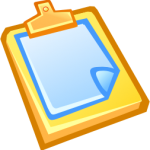 Imagine a week where no red flags appear in Progress Tracker – those crazy hints that you may have to readjust your teaching. This is one of the reasons that it is important to work through the exercises yourself so that you get a feel for any problems that may crop up for your students. In doing so, you are able to work on “prevention” before issues arise.
Imagine a week where no red flags appear in Progress Tracker – those crazy hints that you may have to readjust your teaching. This is one of the reasons that it is important to work through the exercises yourself so that you get a feel for any problems that may crop up for your students. In doing so, you are able to work on “prevention” before issues arise.
I group ‘prevention exercises’ into a couple of categories – “before starting the program” and “situations that will halt progress“. A strong introduction to each of the exercises is crucial for every student. Taking time for this will pay great dividends later. This session introduces the “goal  and how to” of each activity. To be efficient, try to bring together all students who are using the same product. Using DEMO mode, students need to understand how the screen works, what sequences they are expected to complete as well as how exercises their brain. The most difficult activities are Sky Gym/Jumper Gym (elementary) and Space Racer/Sky Rider (secondary). Consider spending multiple sessions in practicing these exercises to develop both understanding of process and accuracy. The other exercises that may be difficult are the ones that involve analysis of language conventions/comprehension (Ele-bot/Cosmic Reader, Stellar Stories/Galaxy Theatre).
and how to” of each activity. To be efficient, try to bring together all students who are using the same product. Using DEMO mode, students need to understand how the screen works, what sequences they are expected to complete as well as how exercises their brain. The most difficult activities are Sky Gym/Jumper Gym (elementary) and Space Racer/Sky Rider (secondary). Consider spending multiple sessions in practicing these exercises to develop both understanding of process and accuracy. The other exercises that may be difficult are the ones that involve analysis of language conventions/comprehension (Ele-bot/Cosmic Reader, Stellar Stories/Galaxy Theatre).
 Using Reports such as Percent Complete History and Participation (Minutes & Trials) can provide an indication of what may come around the corner for the student. The Condensed Report may not offer this insight quick enough for you to intervene before they get stuck. Stay tuned for more on this in our next post.
Using Reports such as Percent Complete History and Participation (Minutes & Trials) can provide an indication of what may come around the corner for the student. The Condensed Report may not offer this insight quick enough for you to intervene before they get stuck. Stay tuned for more on this in our next post.
How are you using DEMO mode? What do you do that you would consider “prevention” activities? How do you use the reports and which ones do you most use?


